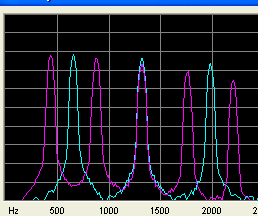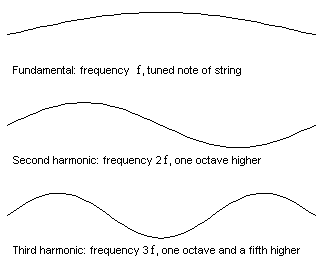Why include this section
The human brain is strange: The more you learn about a subject, the easier it is to remember. With a violin you can play perfectly in tune. Most people will do that when they are playing alone. While writing this course I realized that music and mathematics has a lot together. One of the greatest mathematician Pythagoras, originated his theory in music. Let's find out where music is coming from, and how western music intonation and the teaching of harmony has developed through the centuries. We will discover something that can be used for understanding how to play in tune.Pressure and frequency
Sound is normally created by vibrations. The string of your violin is vibrating, the vibrations are transmitted via the bridge to the body of the violin. The violin wood will give resonance (amplification) of the vibration, and the vibrations are transmitted to pressure waves which will reach your ear. Can sound emerge without vibrations? Yes sometimes it can. In a flute for example the pressure vibrations are created by turbulence in the air flow itself.
The pressure variations are very small. Air pressure may be measured in Pascal Pa which is equivalent of one Newton per square meter. The smallest sound that can be heard is a 20 millionth of a Pa. (equivalent of 0 dB) When you are playing strong with a violin, your ear may be exposed to 96 dB. The pressure in the atmosphere is about 101.000 Pa. In other words you may hear sounds which are variations around a 100 trillionth of the atmospheric pressure. Sound is transmitted with a velocity of . 330 meters per second. (Dependent on the air temperature this may vary slightly). The tones are oscillations of the pressure. The oscillations are measured per second or Hertz (Hz) Children's audible range is from 16 Hz to 20.000Hz. When you get older the upper hearing range get reduced.
Harmonics
All tones that are not pure sinusoidal contains harmonics. Harmonics are generated from a string because the string can vibrate in different modes, one mode is when the full string is vibrating, another mode is when half the string is vibrating, a third mode is when the string is vibrating in three. This will produce a vibration 3 times the basic frequency and so on.
When you play on a Norwegian willow pipe or on hunters horn without valves, you can only produce harmonic tones.

Two notes sounds good together when their harmonic coincides.
The old Greek philosophers realized that harmony was produced when there were a straight numeric relation between the tension of a string or the length of the string. They could not count the frequencies, and understand why. Today we have frequency analyzers and we have an understanding of what causes harmony.

Frequency spectrum of the note A and the note E. You can see that the second harmonic of the E and third harmonic of the A coincides. This produces a harmony for the ear!
